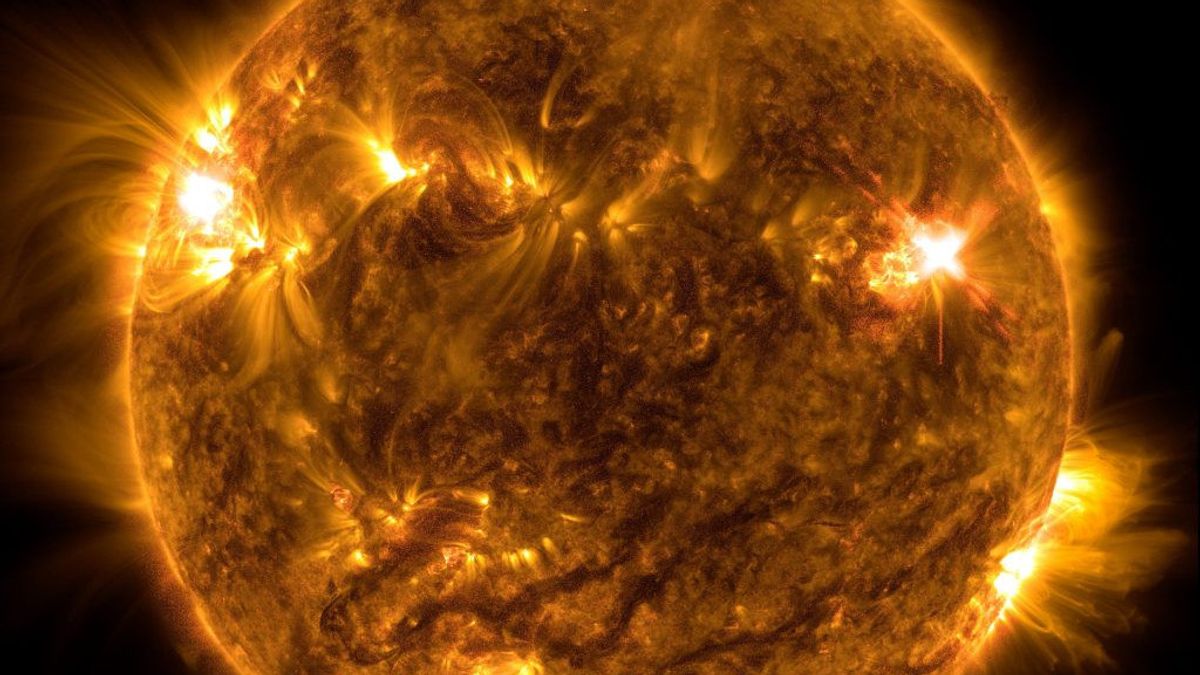JAKARTA - The moment when the Sun emitted a strong energy explosion into space was captured by NASA's Solar Dynamic Observatory. A large flare appears marked by a bright spot on the right side of the image in the X1 sun flare category.
The solar flare is an intense burst of radiation stemming from the release of magnetic energy on the surface of the Sun.
Sun flares are categorized in class. Flare class A is weak, while class X flares are the strongest. Class X flare is given a number, with higher numbers showing more intense flares.
"In this image, they (silver solar) are seen as the brightst area of the Sun and can last from minutes to hours," NASA said in an official statement quoted Wednesday, October 5.
X1 is this year's newest solar shot. Previously, it spewed X2.2 last April. However, of course there will be an impact on Earth.
"Suars of fires and solar eruptions can have an impact on radio communications, power grids, navigation signals, and pose risks to spacecraft and astronauts," NASA explained.
This explosion can also cause increased aurora activity, a beautiful circle of light in the sky.
Citing NDTV, it was the same in April, CESSI, which is the Center of Excellence in Space Sciences (India), reported that there was a potentially harmful solar burst that could interfere with satellite communications and global positioning systems.
The solar flare itself has no negative impact on humans, it can only cause damage to technology due to the release of magnetic energy.
The sun goes through an 11-year solar cycle where its activity increases and decreases. Currently, it is in the Solar cycle of 25 and is increasing towards a maximum of the sun in 2025. That is, there will be more interesting flares in the near future.
The English, Chinese, Japanese, Arabic, and French versions are automatically generated by the AI. So there may still be inaccuracies in translating, please always see Indonesian as our main language. (system supported by DigitalSiber.id)








